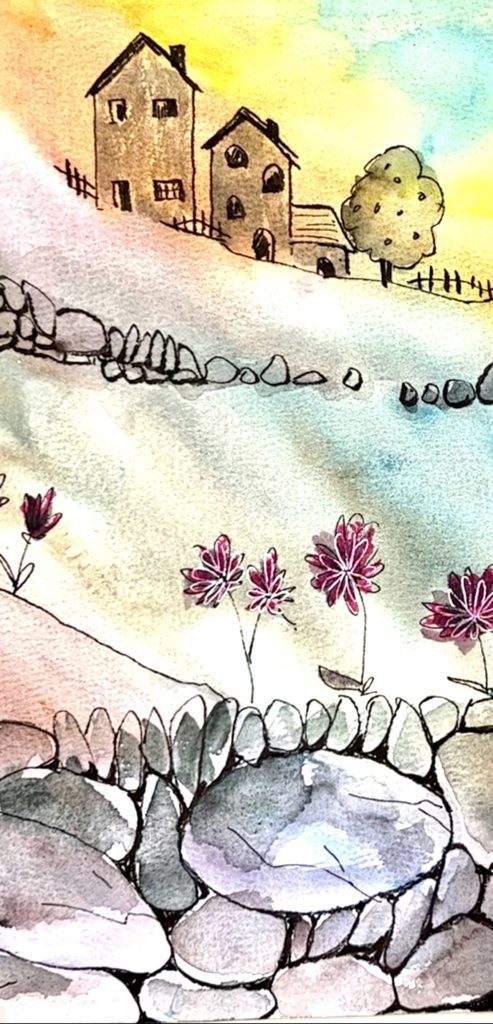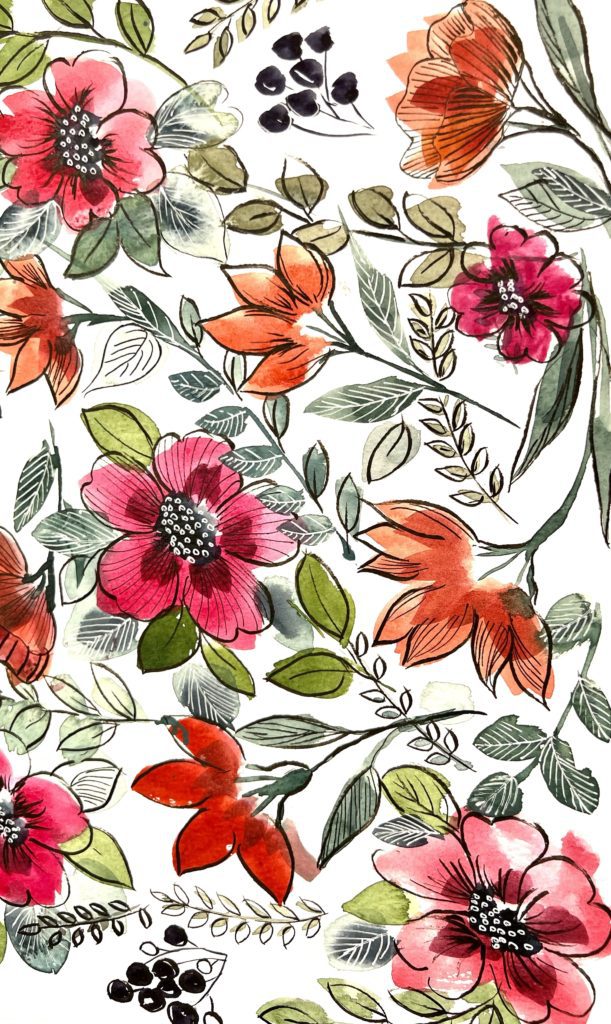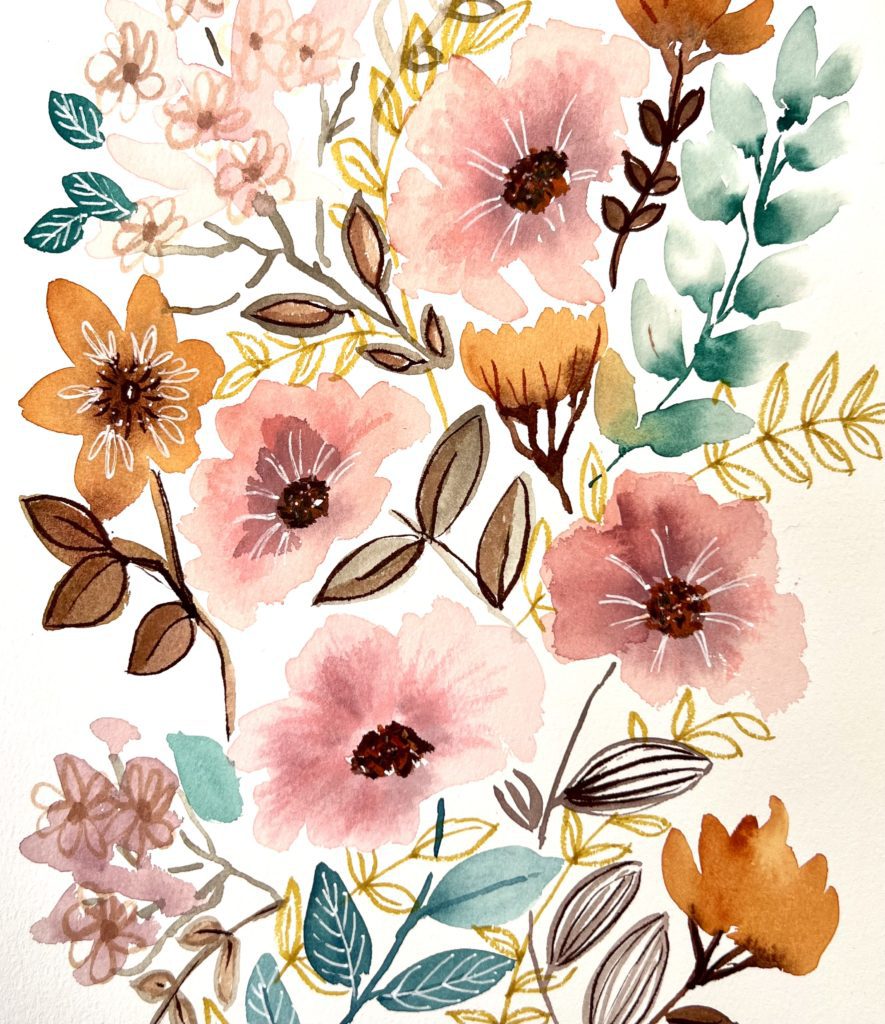Watercolor brush sketching is a technique I’ve recently developed that involves creating quick, spontaneous, and expressive artworks using watercolors and brush pens of various types. It captures the essence and impression of a subject with loose brushwork and powerful line work. It’s minimal but strong on detail, and focuses on capturing the overall mood or atmosphere of the subject. It’s particularly good at depicting flowers and urban scenes.

Here’s a simple example of this style. It shows a mountain scene with a few farmhouses and focuses on the huge stone wall in the foreground.
I like to create my brush sketches fast and with little prior planning. I want to prioritize capturing the subject’s energy and immediacy rather than focusing on intricate details. My goal is to convey a sense of freshness and vitality.
I’m naturally a loose painter and my style tends to be the opposite of tight realism. Loose brushwork is always more fun for me, and using gestural strokes and a “broad brush” approach is the most relaxing way I know of painting. I like to suggest shapes, forms, and textures initially, creating a kind of background over which I can draw, which will always lead to a sense of movement and liveliness in the artwork.
My watercolor brush sketches are always simplified, with few details. But the details I do include are the ones I think essential to describe the basic character of the subject, which is brought to the fore even more by contrasting with the loosely defined or even unfinished areas of the painting.
I’ve always worked with a limited color palette and this is even more important with a watercolor brush sketch. This helps create the essential simple, unified aspect of the sketch, and avoids the possibility of the painting looking “bitty” or busy. Of course, if you are using this technique outdoors it’s of practical value to have a limited palette, simply because it’s easier to carry and handle.

Watercolor paint is traditionally valued for its translucent properties, and this is vital to this style of sketching. The medium’s transparency can be used to create delicate washes, layering and subtle gradations to convey the effects of light and shadow. More opaque areas can be created with brush pens to give more depth and texture to the painting. And details can be easily added with such brush pens as well.

You will be seeing more paintings done in this style on my channel going forward. I like to paint first, and draw afterwards (although for some subjects a simple pencil sketch helps in placing the subject on the paper). I have no interest in staying “inside the lines” and with the Tombow brush I can sharpen up shape and add tonal value and details with gay abandon. I think this method is a great way to capture the mood and atmosphere of an outdoor scene, and it works for buildings, figures, still lifes and more – without worrying about the exact representation of what is in front of you. It makes sketching fun, and we need as much as we can get of that these days!
Am so appreciating your videos. They have sparked my inner creative self which is wanting to come out. Thank you so much.
Elizabeth Mccann